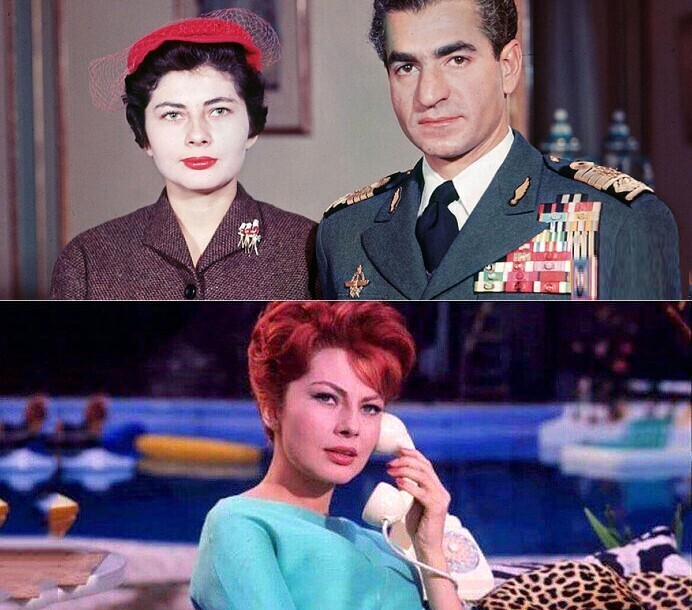Saed News: In the following, along with images of Soraya Esfandiary with her family and second husband after her divorce from Mohammad Reza Pahlavi, we take a look at the tragic fate that befell her after separating from the Shah of Iran.

According to the historical section of Saed News, Soraya Esfandiary was the second wife of Mohammad Reza Pahlavi, who remained in the Iranian court for nearly seven years. She held the title of Queen of Iran after Fawzia and before Farah. Soraya Esfandiary Bakhtiari was born on June 22, 1932 (1 Tir 1311 in the Iranian calendar) at the English Mission Hospital in Isfahan. Her father, Khalil, son of Esfandiar, was a Bakhtiari chieftain. Khalil married Eva Karl, who was born in Saint Petersburg, the capital of Tsarist Russia, and had moved to Germany with her family before World War I started, while studying law and political economy in Germany.
After completing his studies, Khalil returned to Iran with Eva. Six years into their marriage, Soraya was born.

After the divorce of Fawzia — Mohammad Reza Pahlavi’s first wife and sister of King Farouk of Egypt — in October 1948 (Mehr 1327), the Shah sought a new wife. However, he did not favor any of the dozens of women introduced to him until Soraya’s presence in Europe and the praises about her prompted Mohammad Reza to send his sister Shams to London to meet her. Shams liked her and arranged a meeting with her brother in Paris. After seeing Soraya, Mohammad Reza agreed to marry her. From then, the subject of his second marriage became widely discussed in Iran. Soraya came to Tehran, where she was officially proposed to in a private gathering. On October 11, 1950 (19 Mehr 1329), the Iranian court announced the engagement of Mohammad Reza Pahlavi to Soraya Esfandiary Bakhtiari, and on February 12, 1951 (23 Bahman 1329), their wedding ceremony was held at Marble Palace in Tehran. Soraya married Mohammad Reza with a dowry that included a copy of the Quran, a diamond tiara, a diamond necklace, and five million rials in cash, and from that moment was recognized as the Queen of Iran.
Following the death of Alireza, Mohammad Reza’s brother, the Shah seriously considered succession. Soraya had not been able to bear a child. This led to pressure, especially from Iranian court women, including Ashraf, the Shah’s twin sister, who pressed him relentlessly to have children, causing him distress. Meanwhile, Soraya had managed to reduce the influence of the Pahlavi family over her husband.
Their medical treatment began with foreign specialists, and in 1955 (1334 SH), during an unofficial trip to the United States, the Shah and Soraya underwent extensive medical examinations at the Presbyterian Medical Center. However, doctors advised them to be patient.
By 1957 (1336 SH), the Shah had lost hope that Soraya could bear children. Consequently, in January 1958 (Dey 1336), Soraya traveled to Saint Moritz, Switzerland, and on March 13 of that year (23 Esfand), news of their divorce was made public. In a radio speech, the Shah announced that he had decided to prioritize the country’s interests over his personal feelings.
The divorce agreement, delivered to Soraya in Germany by Dr. Mohammad Ali Hedayati, Minister of Justice, and General Nematollah Nasiri, commander of the Iranian Royal Guard, included many conditions such as a monthly allowance of 300,000 rials, the title of Her Highness, and the right to use a diplomatic passport.
Afterward, Soraya began a wandering life in Europe, moving from one country to another and remaining a frequent subject for European press reporters. She briefly pursued acting, appearing in two films including "Three Faces of a Woman," directed by Bellocchio. However, lacking success, she gave up acting. She attempted several times to marry famous European and American actors, but none resulted in marriage. She was married for a time to Franco Indovina, an Italian director, until his death in a plane crash ended their marriage.

The death of her second husband deeply affected Soraya’s spirit. The deaths of her parents soon after further saddened her; by then, her only close family was her brother.
According to the memoirs of Asadollah Alam, the Shah’s court minister, Soraya requested in a 1975 (1354 SH) letter that the Shah purchase an apartment for her in Paris, a request the Shah approved. One year later, in November 1976 (Aban 1355), she requested a monthly pension of six to seven thousand dollars, which angered the Shah.
Although the Shah married Farah Diba in December 1959 (Azar 1338), shortly after divorcing Soraya, he continued to show affection for her. It is even said that when Mohammad Reza Pahlavi spent the last days of his life in exile in Cairo in 1980 (1359 SH), Soraya secretly sent him a letter whose contents remain unknown.
Soraya Esfandiary never returned to Iran after leaving and was found dead on October 25, 2001 (3 Aban 1380) by a close acquaintance in her apartment in Paris. Her brother died three days later.
Notably, all the jewels and wealth that Mohammad Reza Pahlavi allowed Soraya to take out of Iran after their divorce were divided among three charitable organizations due to her lack of heirs.
As you have read in this text, you can see how the Shah of Iran, even after divorcing his wives, generously used public funds for their comfort and well-being.

